'분류 전체보기'에 해당되는 글 417건
- 2010.02.04 자료 보관할 내용. 1
- 2010.02.03 안드로이드 위젯에서 Activity 호출하기. 17
- 2010.02.02 How to make a simple Android widget 5
- 2010.01.29 공개 채팅 서버 openfire 설치 구동
- 2010.01.28 Using Google Maps in Android 63
- 2010.01.22 A Visual Guide to Android GUI Widgets
- 2010.01.21 안드로이드 에뮬레이터에 가상의 SD카드 마운트시키기
- 2010.01.20 Web View 샘플구현 8
- 2010.01.19 Using java.net.URL for input stream access 8
- 2010.01.19 안드로이드 ListActivity 링크소스 10
| * |
| * Copyright (C) 2009 The Android Open Source Project |
| * |
| * Licensed under the Apache License, Version 2.0 (the "License"); |
| * you may not use this file except in compliance with the License. |
| * You may obtain a copy of the License at |
| * |
| * http://www.apache.org/licenses/LICENSE-2.0 |
| * |
| * Unless required by applicable law or agreed to in writing, software |
| * distributed under the License is distributed on an "AS IS" BASIS, |
| * WITHOUT WARRANTIES OR CONDITIONS OF ANY KIND, either express or implied. |
| * See the License for the specific language governing permissions and |
| * limitations under the License. |
| */ |
| package com.example.android.wiktionary; |
| import com.example.android.wiktionary.SimpleWikiHelper.ApiException; |
| import com.example.android.wiktionary.SimpleWikiHelper.ParseException; |
| import android.app.PendingIntent; |
| import android.app.Service; |
| import android.appwidget.AppWidgetManager; |
| import android.appwidget.AppWidgetProvider; |
| import android.content.ComponentName; |
| import android.content.Context; |
| import android.content.Intent; |
| import android.content.res.Resources; |
| import android.net.Uri; |
| import android.os.IBinder; |
| import android.text.format.Time; |
| import android.util.Log; |
| import android.widget.RemoteViews; |
| import java.util.regex.Matcher; |
| import java.util.regex.Pattern; |
| /** |
| * Define a simple widget that shows the Wiktionary "Word of the day." To build |
| * an update we spawn a background {@link Service} to perform the API queries. |
| */ |
| public class WordWidget extends AppWidgetProvider { |
| /** |
| * Regular expression that splits "Word of the day" entry into word |
| * name, word type, and the first description bullet point. |
| */ |
| public static final String WOTD_PATTERN = |
| "(?s)\\{\\{wotd\\|(.+?)\\|(.+?)\\|([^#\\|]+).*?\\}\\}"; |
| @Override |
| public void onUpdate(Context context, AppWidgetManager appWidgetManager, int[] appWidgetIds) { |
| Log.d("WordWidget.UpdateService", "onUpdate()"); |
| // To prevent any ANR timeouts, we perform the update in a service |
| context.startService(new Intent(context, UpdateService.class)); |
| } |
| public static class UpdateService extends Service { |
| @Override |
| public void onStart(Intent intent, int startId) { |
| Log.d("WordWidget.UpdateService", "onStart()"); |
| // Build the widget update for today |
| RemoteViews updateViews = buildUpdate(this); |
| Log.d("WordWidget.UpdateService", "update built"); |
| // Push update for this widget to the home screen |
| ComponentName thisWidget = new ComponentName(this, WordWidget.class); |
| AppWidgetManager manager = AppWidgetManager.getInstance(this); |
| manager.updateAppWidget(thisWidget, updateViews); |
| Log.d("WordWidget.UpdateService", "widget updated"); |
| } |
| @Override |
| public IBinder onBind(Intent intent) { |
| return null; |
| } |
| /** |
| * Build a widget update to show the current Wiktionary |
| * "Word of the day." Will block until the online API returns. |
| */ |
| public RemoteViews buildUpdate(Context context) { |
| // Pick out month names from resources |
| Resources res = context.getResources(); |
| String[] monthNames = res.getStringArray(R.array.month_names); |
| // Find current month and day |
| Time today = new Time(); |
| today.setToNow(); |
| // Build the page title for today, such as "March 21" |
| String pageName = res.getString(R.string.template_wotd_title, |
| monthNames[today.month], today.monthDay); |
| String pageContent = null; |
| try { |
| // Try querying the Wiktionary API for today's word |
| SimpleWikiHelper.prepareUserAgent(context); |
| pageContent = SimpleWikiHelper.getPageContent(pageName, false); |
| } catch (ApiException e) { |
| Log.e("WordWidget", "Couldn't contact API", e); |
| } catch (ParseException e) { |
| Log.e("WordWidget", "Couldn't parse API response", e); |
| } |
| RemoteViews views = null; |
| Matcher matcher = null; |
| Prefs prefs = new Prefs(this); |
| if (pageContent == null) { |
| // could not get content, use cache |
| // could be null |
| pageContent = prefs.getPageContent(); |
| } |
| if (pageContent != null) { |
| // we have page content |
| // is it valid? |
| matcher = Pattern.compile(WOTD_PATTERN).matcher(pageContent); |
| } |
| if (matcher != null && matcher.find()) { |
| // valid content, cache it |
| // ensure that latest valid content is |
| // always cached in case of failures |
| prefs.setPageContent(pageContent); |
| // Build an update that holds the updated widget contents |
| views = new RemoteViews(context.getPackageName(), R.layout.widget_word); |
| String wordTitle = matcher.group(1); |
| views.setTextViewText(R.id.word_title, wordTitle); |
| views.setTextViewText(R.id.word_type, matcher.group(2)); |
| views.setTextViewText(R.id.definition, matcher.group(3).trim()); |
| // When user clicks on widget, launch to Wiktionary definition page |
| String definePage = String.format("%s://%s/%s", ExtendedWikiHelper.WIKI_AUTHORITY, |
| ExtendedWikiHelper.WIKI_LOOKUP_HOST, wordTitle); |
| Intent defineIntent = new Intent(Intent.ACTION_VIEW, Uri.parse(definePage)); |
| PendingIntent pendingIntent = PendingIntent.getActivity(context, |
| 0 /* no requestCode */, defineIntent, 0 /* no flags */); |
| views.setOnClickPendingIntent(R.id.widget, pendingIntent); |
| } else { |
| // Didn't find word of day, so show error message |
| views = new RemoteViews(context.getPackageName(), R.layout.widget_message); |
| views.setTextViewText(R.id.message, context.getString(R.string.widget_error)); |
| } |
| return views; |
| } |
| } |
| } |
<LinearLayout
xmlns:android="http://schemas.android.com/apk/res/android"
android:id="@+id/LinearLayout01"
android:layout_height="200dp"
android:background="@drawable/background"
android:layout_width="160dp"
android:orientation="horizontal">
<Button
android:text="@+id/Button01"
android:id="@+id/Button01"
android:layout_width="wrap_content"
android:layout_height="wrap_content">
</Button>
<TextView
android:id="@+id/widget_textview"
android:layout_width="fill_parent"
android:layout_height="wrap_content"
android:gravity="center_vertical|center_horizontal"
android:textColor="@android:color/black"
android:text="17:12:34 PM"
android:textSize="8pt"
/>
호출 받을 Activity만들기
import android.os.Bundle;
@Override
public void onCreate(Bundle savedInstanceState) {
super.onCreate(savedInstanceState);
// TODO Auto-generated method stub
}
위젯의 배경 이미지 만들기 /res/drawable/background.png

위젯의 레이아웃 만들기 . layout/appwidgetmain.xml
<LinearLayout
xmlns:android="http://schemas.android.com/apk/res/android"
android:id="@+id/LinearLayout01"
android:layout_height="200dp"
android:background="@drawable/background"
android:layout_width="160dp"
android:orientation="horizontal">
<Button
android:text="@+id/Button01"
android:id="@+id/Button01"
android:layout_width="wrap_content"
android:layout_height="wrap_content">
</Button>
<TextView
android:id="@+id/widget_textview"
android:layout_width="fill_parent"
android:layout_height="wrap_content"
android:gravity="center_vertical|center_horizontal"
android:textColor="@android:color/black"
android:text="17:12:34 PM"
android:textSize="8pt"
/>
AppWidgetProvider를 상속 받은 위젯 메인 페이지 만들기.
import java.text.SimpleDateFormat;
import java.util.Date;
import java.util.Locale;
import android.appwidget.AppWidgetManager;
import android.appwidget.AppWidgetProvider;
import android.content.ComponentName;
import android.content.Context;
import android.content.Intent;
import android.net.Uri;
import android.widget.RemoteViews;
{
@Override
public void onUpdate( Context context, AppWidgetManager appWidgetManager, int[] appWidgetIds )
{
RemoteViews remoteViews;
ComponentName watchWidget;
DateFormat format = SimpleDateFormat.getTimeInstance( SimpleDateFormat.MEDIUM, Locale.getDefault() );
Intent intent = new Intent();
intent.addCategory(Intent.CATEGORY_BROWSABLE);
intent.setComponent(new ComponentName("com.sh.watchwidget", "com.sh.watchwidget.MyActvity"));
PendingIntent pendingIntent = PendingIntent.getActivity(context, 0, intent, 0);
remoteViews = new RemoteViews( context.getPackageName(), R.layout.appwidgetmain );
watchWidget = new ComponentName( context, WatchWidget.class );
remoteViews.setTextViewText( R.id.widget_textview, "Time = " + format.format( new Date()));
remoteViews.setOnClickPendingIntent(R.id.Button01, pendingIntent);
appWidgetManager.updateAppWidget( watchWidget, remoteViews );
}
}
appwidget-provider xml 파일 만들기
<appwidget-provider
xmlns:android="http://schemas.android.com/apk/res/android"
android:minWidth="146dp"
android:initialLayout="@layout/appwidgetmain"
android:updatePeriodMillis="1000"
android:minHeight="144dp"/>
AndroidManifest.xml 파일에 application 추가하기
<?xml version="1.0" encoding="utf-8"?>
<manifest
xmlns:android="http://schemas.android.com/apk/res/android"
package="com.sh.watchwidget"
android:versionCode="1"
android:versionName="1.0">
<application android:icon="@drawable/icon" android:label="@string/app_name" android:debuggable="true">
<receiver android:name=".WatchWidget" android:label="@string/app_name">
<intent-filter>
<action android:name="android.appwidget.action.APPWIDGET_UPDATE" />
</intent-filter>
<meta-data
android:name="android.appwidget.provider"
android:resource="@xml/watch_widget_provider" />
</receiver>
<activity android:name="MyActvity"></activity>
</application>
<uses-sdk android:minSdkVersion="3" />
</manifest>
결과 화면


소스를 보면 간단하지만 2일동안 삽질하여 만들 소스입니다.
아래는 아카이브 파일입니다.
How to make a simple Android widget

Yesterday I made my first Android widget. A very simple widget, just to try it out. It can show the time. No more, no less. I will here show you how to get started on widgets. I’ll start from scratch, so you actually don’t need any knowledge on Android development. Well, of course you need to have the SDK, and Eclipse installed and ready.
I used the 1.5 SDK, but it will probably work on newer SDK’s too.
I will show you how to do it in 6 easy steps.
1. Create a new Android project
Fire up Eclipse, and click File -> New -> Android project

Type in a name for you project, eg. WatchWidget. Select the target, 1.5 in my case. I guess that there could be differences, so if you are not experienced in Android development, I suggest that you use 1.5 too.
Then we need an application name, which is the name that will show up on your phone. And last but not least, a package name.
Uncheck “Create activity”, as we don’t want any activities in this sample.
Click Finish to create the project. Now you have a structure that looks like this:

2. Create the Java class
Right-click com.kasperholtze.watchwidget (or whatever you used for package name), and select New -> Class:

Give the class a name, i.e. WatchWidget. Then we need to extend the AppWidgetProvider, so type in android.appwidget.AppWidgetProvider as superclass, or browse for it.
Click Finish, and Eclipse will generate the following code:
import android.appwidget.AppWidgetProvider;
public class WatchWidget extends AppWidgetProvider {
}
3. Create the Java code
Now it’s time to create our Java code, for updating the widget. Type in the following code:
import java.text.DateFormat;
import java.text.SimpleDateFormat;
import java.util.Date;
import java.util.Locale;
import com.kasperholtze.watchwidget.R;
import android.appwidget.AppWidgetManager;
import android.appwidget.AppWidgetProvider;
import android.content.ComponentName;
import android.content.Context;
import android.widget.RemoteViews;
public class WatchWidget extends AppWidgetProvider
{
@Override
public void onUpdate( Context context, AppWidgetManager appWidgetManager, int[] appWidgetIds )
{
RemoteViews remoteViews;
ComponentName watchWidget;
DateFormat format = SimpleDateFormat.getTimeInstance( SimpleDateFormat.MEDIUM, Locale.getDefault() );
remoteViews = new RemoteViews( context.getPackageName(), R.layout.main );
watchWidget = new ComponentName( context, WatchWidget.class );
remoteViews.setTextViewText( R.id.widget_textview, "Time = " + format.format( new Date()));
appWidgetManager.updateAppWidget( watchWidget, remoteViews );
}
}
The only method we use in this class, is onUpdate( Context context, AppWidgetManager appWidgetManager, int[] appWidgetIds ), which we override from the AppWidgetProvider class.
First we create three objects. remoteViews, watchWidget and format. remoteViews is a reference to the main view, which we will create in a moment. watchWidget is a reference to our class, and format is the date format used to show the time.
Then we initialize the remoteViews and watchWidget. You will get an error one the line remoteViews.setTextViewText(), which is where we actually update the text on our widget, stating that R.id is not found, but that’s all right for now. We will create that one in a moment too.
appWidgetManager.updateAppWidget sets the RemoteViews that should be used for our widget.
4. Edit the view for our widget, main.xml
Using the UI designer takes some trying, testing and failing. If you have not tried this yet, you should try playing around with it. It takes some time to get the feeling of it.
My main.xml looks like this:
<LinearLayout
xmlns:android="http://schemas.android.com/apk/res/android"
android:id="@+id/LinearLayout01"
android:layout_height="200dp"
android:background="@drawable/background"
android:layout_width="160dp"
android:orientation="horizontal">
<TextView
android:id="@+id/widget_textview"
android:layout_width="fill_parent"
android:layout_height="fill_parent"
android:gravity="center_vertical|center_horizontal"
android:textColor="@android:color/black"
android:text="17:12:34 PM"
android:textSize="8pt"
/>
</LinearLayout>
It contains a LinearLayout with a TextView inside. The important thing is the id of out TextView, which we used earlier in the WatchWidget class.
I used a standard widget background, which you can download at http://developer.android.com/guide/practices/ui_guidelines/widget_design.html. You can also grab it here:

Save it in the project, at res/drawable/background.png
5. Edit AndroidManifest.xml
The next thing is to edit the AndroidManifest.xml, which defines the application. We need to add an intent-filter, meta-data that defines which xml file we use for defining the widget provider, and name and other details of the application.
Here it goes…
<manifest
xmlns:android="http://schemas.android.com/apk/res/android"
package="com.kasperholtze.watchwidget"
android:versionCode="1"
android:versionName="1.0">
<application android:icon="@drawable/icon" android:label="@string/app_name" android:debuggable="true">
<receiver android:name=".WatchWidget" android:label="@string/app_name">
<intent-filter>
<action android:name="android.appwidget.action.APPWIDGET_UPDATE" />
</intent-filter>
<meta-data
android:name="android.appwidget.provider"
android:resource="@xml/watch_widget_provider" />
</receiver>
</application>
<uses-sdk android:minSdkVersion="3" />
</manifest>
6. Create widget provider
The last thing we have to do, before the application is ready to run, is to create a XML file, defining the widget provider. Create a new folder under res, called xml, and save the file as res/xml/watch_widget_provider.xml.
<appwidget-provider
xmlns:android="http://schemas.android.com/apk/res/android"
android:minWidth="146dp"
android:initialLayout="@layout/main"
android:updatePeriodMillis="1000"
android:minHeight="144dp"/>
Here we set the minimum size that the widget needs to be added to a home screen. And then we set the updatePeriodMillis. updatePeriodMillis defines how often we wish to call the onUpdate method that we created earlier in the Java class.
That’s it! Connect your phone, or fire up a virtual device, and try it out
XMPP(eXtensible Messaging and Presence Protocol) 프로토콜 기반의 공개 채팅서버인 OpenFire를 로컬 경로에 설치하고 테스트 해 보았습니다.
지원하는 플랫폼은 Windows/Linux/Mac 입니다.
다운로드 URL : http://www.igniterealtime.org/projects/openfire/index.jsp
설치 가이드 : http://www.igniterealtime.org/builds/openfire/docs/latest/documentation/install-guide.html
저는 Windows용 무설치 버전을 받아 C:\openfire 경로에 압축을 해제 하였습니다.
(* 바탕화면에 압축 해제 후 실행시 한글 경로를 찾지 못하는 현상이 있는 듯 합니다.)
압축 해제 후 다음과 같이 실행합니다.
openfire-service.exe /start (서버 시작)
openfire.exe (실행)
위와 같은 Openfire 창이 뜨면 Launch Admin 버튼으로 초기 세팅을 진행해야 합니다.
서버정보, DB계정등을 입력해야 Openfire가 정상적으로 구동됩니다.
MySQL 이외의 DB서버를 사용한다면 DB서버에 따라 jdbc 라이브러리를 /lib 디렉토리에 위치시켜 놓고 서버를 재시작 합니다.
모든 설치과정이 끝나면, 클라이언트를 통해 메신저 서버에 접속 할 수 있습니다.
Spark 또는 SparkWeb을 통해 접속 해 봅니다.
정상적으로 동작합니다.
GPL 이기 때문에 소스를 SVN에서 받아 수정 해 사용하면 될 듯 싶습니다.
--- 2009.04.07. 추가 ---
저도 위와 같이 서버와 클라이언트를 설치하여 사용만 해 봤을 뿐이라 많은 정보를 드리지 못해서 죄송합니다.
국내나 해외에도 해당 소스를 수정하여 진행하는 작업에 대한 정보도 많지 않았습니다.
혹시 오픈파이어나 Spark를 가지고 진행하는 프로젝트를 하고 계시다면 또는 정보를 정리하고 계신다면 트랙백 걸어주시거나 정보 링크를 댓글로 알려주시면 많은 분들이 도움이 될것 같습니다.
Creating the Project
Using Eclipse, create a new Android project and name GoogleMaps as shown in Figure 1.
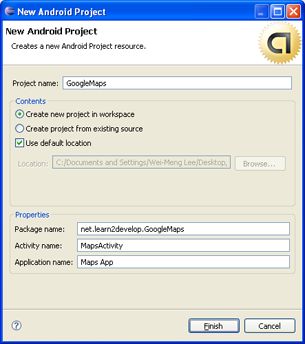
Figure 1 Creating a new Android project using Eclipse
Obtaining a Maps API key
Beginning with the Android SDK release v1.0, you need to apply for a free Google Maps API key before you can integrate Google Maps into your Android application. To apply for a key, you need to follow the series of steps outlined below. You can also refer to Google's detailed documentation on the process at http://code.google.com/android/toolbox/apis/mapkey.html.
First, if you are testing the application on the Android emulator, locate the SDK debug certificate located in the default folder of "C:\Documents and Settings\<username>\Local Settings\Application Data\Android". The filename of the debug keystore is debug.keystore. For deploying to a real Android device, substitute the debug.keystore file with your own keystore file. In a future article I will discuss how you can generate your own keystore file.
For simplicity, copy this file (debug.keystore) to a folder in C:\ (for example, create a folder called "C:\Android").
Using the debug keystore, you need to extract its MD5 fingerprint using the Keytool.exe application included with your JDK installation. This fingerprint is needed to apply for the free Google Maps key. You can usually find the Keytool.exe from the "C:\Program Files\Java\<JDK_version_number>\bin" folder.
Issue the following command (see also Figure 2) to extract the MD5 fingerprint.
keytool.exe -list -alias androiddebugkey -keystore "C:\android\debug.keystore" -storepass
android -keypass android
Copy the MD5 certificate fingerprint and navigate your web browser to: http://code.google.com/android/maps-api-signup.html. Follow the instructions on the page to complete the application and obtain the Google Maps key.
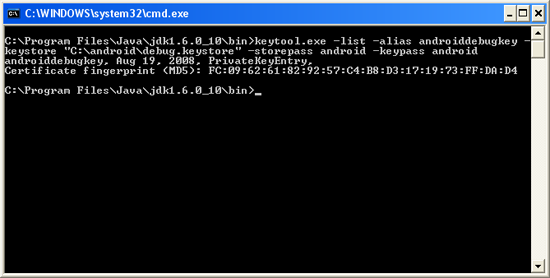
Figure 2 Obtaining the MD5 fingerprint of the debug keystore
To use the Google Maps in your Android application, you need to modify your AndroidManifest.xml file by adding the <uses-library> element together with the INTERNET permission:
<?xml version="1.0" encoding="utf-8"?> <manifest xmlns:android="http://schemas.android.com/apk/res/android" package="net.learn2develop.GoogleMaps" android:versionCode="1" android:versionName="1.0.0"> <application android:icon="@drawable/icon" android:label="@string/app_name"> <uses-library android:name="com.google.android.maps" /> <activity android:name=".MapsActivity" android:label="@string/app_name"> <intent-filter> <action android:name="android.intent.action.MAIN" /> <category android:name="android.intent.category.LAUNCHER" /> </intent-filter> </activity> </application> <uses-permission android:name="android.permission.INTERNET" /> </manifest> </xml>
Displaying the Map
To display the Google Maps in your Android application, modify the main.xml file located in the res/layout folder. You shall use the <com.google.android.maps.MapView> element to display the Google Maps in your activity. In addition, let's use the <RelativeLayout> element to position the map within the activity:
<?xml version="1.0" encoding="utf-8"?> <RelativeLayout xmlns:android="http://schemas.android.com/apk/res/android" android:layout_width="fill_parent" android:layout_height="fill_parent"> <com.google.android.maps.MapView android:id="@+id/mapView" android:layout_width="fill_parent" android:layout_height="fill_parent" android:enabled="true" android:clickable="true" android:apiKey="0l4sCTTyRmXTNo7k8DREHvEaLar2UmHGwnhZVHQ" /> </RelativeLayout>
Notice from above that I have used the Google Maps key that I obtained earlier and put it into the apiKey attribute.
In the MapsActivity.java file, modify the class to extend from the MapActivity class, instead of the normal Activity class:
package net.learn2develop.GoogleMaps; import com.google.android.maps.MapActivity; import com.google.android.maps.MapView; import android.os.Bundle; public class MapsActivity extends MapActivity { /** Called when the activity is first created. */ @Override public void onCreate(Bundle savedInstanceState) { super.onCreate(savedInstanceState); setContentView(R.layout.main); } @Override protected boolean isRouteDisplayed() { return false; } }
Observe that if your class extends the MapActivity class, you need to override the isRouteDisplayed() method. You can simply do so by setting the method to return false.
That's it! That's all you need to do to display the Google Maps in your application. Press F11 in Eclipse to deploy the application onto an Android emulator. Figure 3 shows the Google map in all its glory.

Figure 3 Google Maps in your application
At this juncture, take note of a few troubleshooting details. If your program does not run (i.e. it crashes), then it is likely you forgot to put the following statement in your AndroidManifest.xml file:
<uses-library android:name="com.google.android.maps" />If your application manages to load but you cannot see the map (all you see is a grid), then it is very likely you do not have a valid Map key, or that you did not specify the INTERNET permission:
<uses-permission android:name="android.permission.INTERNET" />Displaying the Zoom View
The previous section showed how you can display the Google Maps in your Android device. You can drag the map to any desired location and it will be updated on the fly. However, observe that there is no way to zoom in or out from a particular location. Thus, in this section, you will learn how you can let users zoom into or out of the map.
First, add a <LinearLayout> element to the main.xml file as shown below:
<?xml version="1.0" encoding="utf-8"?> <RelativeLayout xmlns:android="http://schemas.android.com/apk/res/android" android:layout_width="fill_parent" android:layout_height="fill_parent"> <com.google.android.maps.MapView android:id="@+id/mapView" android:layout_width="fill_parent" android:layout_height="fill_parent" android:enabled="true" android:clickable="true" android:apiKey="0l4sCTTyRmXTNo7k8DREHvEaLar2UmHGwnhZVHQ" /> <LinearLayout android:id="@+id/zoom" android:layout_width="wrap_content" android:layout_height="wrap_content" android:layout_alignParentBottom="true" android:layout_centerHorizontal="true" /> </RelativeLayout>
You will use the <LinearLayout> element to hold the two zoom controls in Google Maps (you will see this shortly).
In the MapsActivity.java file, add the following imports:
import com.google.android.maps.MapView.LayoutParams; import android.view.View; import android.widget.LinearLayout;
and add the following code after the line setContentView(R.layout.main);
mapView = (MapView) findViewById(R.id.mapView); LinearLayout zoomLayout = (LinearLayout)findViewById(R.id.zoom); View zoomView = mapView.getZoomControls(); zoomLayout.addView(zoomView, new LinearLayout.LayoutParams( LayoutParams.WRAP_CONTENT, LayoutParams.WRAP_CONTENT)); mapView.displayZoomControls(true);
The complete MapsActivity.java file is given below:
package net.learn2develop.GoogleMaps; import com.google.android.maps.MapActivity; import com.google.android.maps.MapView; import com.google.android.maps.MapView.LayoutParams; import android.os.Bundle; import android.view.View; import android.widget.LinearLayout; public class MapsActivity extends MapActivity { MapView mapView; /** Called when the activity is first created. */ @Override public void onCreate(Bundle savedInstanceState) { super.onCreate(savedInstanceState); setContentView(R.layout.main); mapView = (MapView) findViewById(R.id.mapView); LinearLayout zoomLayout = (LinearLayout)findViewById(R.id.zoom); View zoomView = mapView.getZoomControls(); zoomLayout.addView(zoomView, new LinearLayout.LayoutParams( LayoutParams.WRAP_CONTENT, LayoutParams.WRAP_CONTENT)); mapView.displayZoomControls(true); } @Override protected boolean isRouteDisplayed() { // TODO Auto-generated method stub return false; } }
Basically, you obtain the MapView instance on the activity, obtain its zoom controls and then add it to the LinearLayout element you added to the activity earlier on. In the above case, the zoom control will be displayed at the bottom of the screen. When you now press F11 in Eclipse, you will see the zoom controls when you touch the map (see Figure 4).
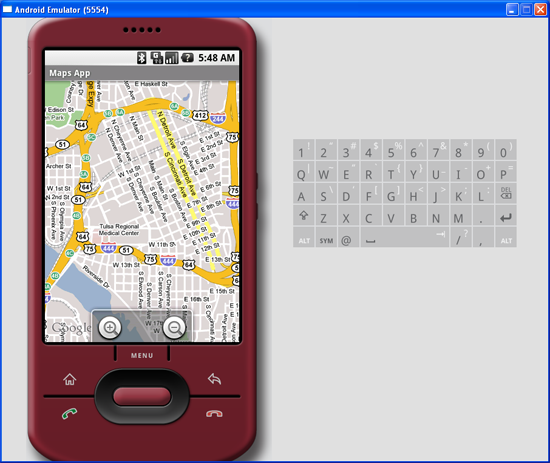
Figure 4 Using the zoom controls in Google Maps
Using the zoom control, you can zoom in or out of a location by simply touching the "+ or "-" buttons on the screen.
Alternatively, you can also programmatically zoom in or out of the map using the zoomIn() and zoomOut() methods from the MapController class:
package net.learn2develop.GoogleMaps; //... import android.os.Bundle; import android.view.KeyEvent; public class MapsActivity extends MapActivity { MapView mapView; public boolean onKeyDown(int keyCode, KeyEvent event) { MapController mc = mapView.getController(); switch (keyCode) { case KeyEvent.KEYCODE_3: mc.zoomIn(); break; case KeyEvent.KEYCODE_1: mc.zoomOut(); break; } return super.onKeyDown(keyCode, event); } /** Called when the activity is first created. */ @Override public void onCreate(Bundle savedInstanceState) { //... } @Override protected boolean isRouteDisplayed() { // TODO Auto-generated method stub return false; } }
In the above code, when the user presses the number 3 on the keyboard the map will zoom in into the next level. Pressing number 1 will zoom out one level.
Changing Views of the Map
By default, the Google Maps displays in the map mode. If you wish to display the map in satellite view, you can use the setSatellite() method of the MapView class, like this:
mapView.setSatellite(true);
You can also display the map in street view, using the setStreetView() method:
mapView.setStreetView(true);
Figure 5 shows the Google Maps displayed in satellite and street views, respectively.
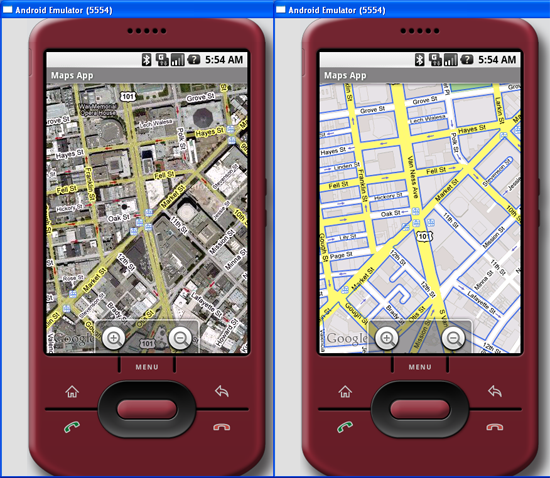
Figure 5 Displaying Google Maps in satellite and street views
Displaying a Particular Location
Be default, the Google Maps displays the map of the United States when it is first loaded. However, you can also set the Google Maps to display a particular location. In this case, you can use the animateTo() method of the MapController class.
The following code shows how this is done:
package net.learn2develop.GoogleMaps; import com.google.android.maps.GeoPoint; import com.google.android.maps.MapActivity; import com.google.android.maps.MapController; import com.google.android.maps.MapView; import com.google.android.maps.MapView.LayoutParams; import android.os.Bundle; import android.view.View; import android.widget.LinearLayout; public class MapsActivity extends MapActivity { MapView mapView; MapController mc; GeoPoint p; /** Called when the activity is first created. */ @Override public void onCreate(Bundle savedInstanceState) { super.onCreate(savedInstanceState); setContentView(R.layout.main); mapView = (MapView) findViewById(R.id.mapView); LinearLayout zoomLayout = (LinearLayout)findViewById(R.id.zoom); View zoomView = mapView.getZoomControls(); zoomLayout.addView(zoomView, new LinearLayout.LayoutParams( LayoutParams.WRAP_CONTENT, LayoutParams.WRAP_CONTENT)); mapView.displayZoomControls(true); mc = mapView.getController(); String coordinates[] = {"1.352566007", "103.78921587"}; double lat = Double.parseDouble(coordinates[0]); double lng = Double.parseDouble(coordinates[1]); p = new GeoPoint( (int) (lat * 1E6), (int) (lng * 1E6)); mc.animateTo(p); mc.setZoom(17); mapView.invalidate(); } @Override protected boolean isRouteDisplayed() { // TODO Auto-generated method stub return false; } }
In the above code, you first obtain a controller from the MapView instance and assign it to a MapController object (mc). You use a GeoPoint object to represent a geographical location. Note that for this class the latitude and longitude of a location are represented in micro degrees. This means that they are stored as integer values. For a latitude value of 40.747778, you need to multiply it by 1e6 to obtain 40747778.
To navigate the map to a particular location, you can use the animateTo() method of the MapController class (an instance which is obtained from the MapView object). The setZoom() method allows you to specify the zoom level in which the map is displayed. Figure 6 shows the Google Maps displaying the map of Singapore.
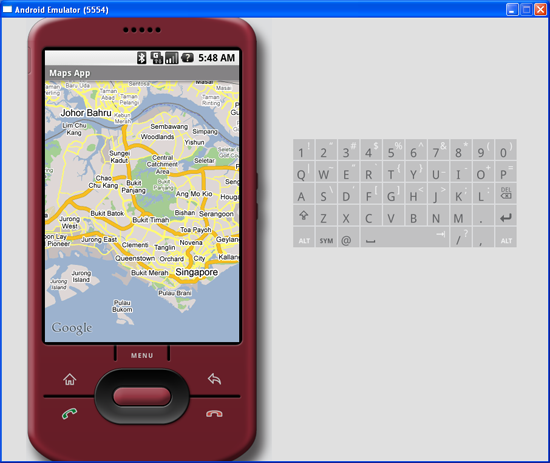
Figure 6 Navigating to a particular location on the map
Adding Markers
Very often, you may wish to add markers to the map to indicate places of interests. Let's see how you can do this in Android. First, create a GIF image containing a pushpin (see Figure 7) and copy it into the res/drawable folder of the project. For best effect, you should make the background of the image transparent so that it does not block off parts of the map when the image is added to the map.
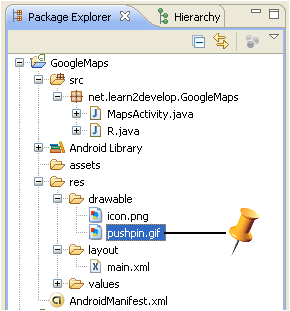
Figure 7 Adding an image to the res/drawable folder
To add a marker to the map, you first need to define a class that extends the Overlay class:
package net.learn2develop.GoogleMaps; import java.util.List; import com.google.android.maps.GeoPoint; import com.google.android.maps.MapActivity; import com.google.android.maps.MapController; import com.google.android.maps.MapView; import com.google.android.maps.Overlay; import com.google.android.maps.MapView.LayoutParams; import android.graphics.Bitmap; import android.graphics.BitmapFactory; import android.graphics.Canvas; import android.graphics.Point; import android.os.Bundle; import android.view.View; import android.widget.LinearLayout; public class MapsActivity extends MapActivity { MapView mapView; MapController mc; GeoPoint p; class MapOverlay extends com.google.android.maps.Overlay { @Override public boolean draw(Canvas canvas, MapView mapView, boolean shadow, long when) { super.draw(canvas, mapView, shadow); //---translate the GeoPoint to screen pixels--- Point screenPts = new Point(); mapView.getProjection().toPixels(p, screenPts); //---add the marker--- Bitmap bmp = BitmapFactory.decodeResource( getResources(), R.drawable.pushpin); canvas.drawBitmap(bmp, screenPts.x, screenPts.y-50, null); return true; } } /** Called when the activity is first created. */ @Override public void onCreate(Bundle savedInstanceState) { //... } @Override protected boolean isRouteDisplayed() { // TODO Auto-generated method stub return false; } }
In the MapOverlay class that you have defined, override the draw() method so that you can draw the pushpin image on the map. In particular, note that you need to translate the geographical location (represented by a GeoPoint object, p) into screen coordinates.
As you want the pointed tip of the push pin to indicate the position of the location, you would need to deduct the height of the image (which is 50 pixels) from the y-coordinate of the point (see Figure 8) and draw the image at that location.
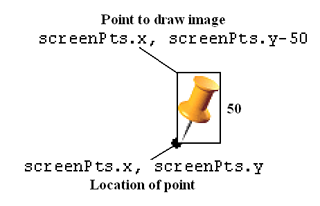
Figure 8 Adding an image to the map
To add the marker, create an instance of the MapOverlap class and add it to the list of overlays available on the MapView object:
@Override
public void onCreate(Bundle savedInstanceState)
{
super.onCreate(savedInstanceState);
setContentView(R.layout.main);
//...
mc.animateTo(p);
mc.setZoom(17);
//---Add a location marker---
MapOverlay mapOverlay = new MapOverlay();
List<Overlay> listOfOverlays = mapView.getOverlays();
listOfOverlays.clear();
listOfOverlays.add(mapOverlay);
mapView.invalidate();
}Figure 9 shows how the pushpin looks like when added to the map.
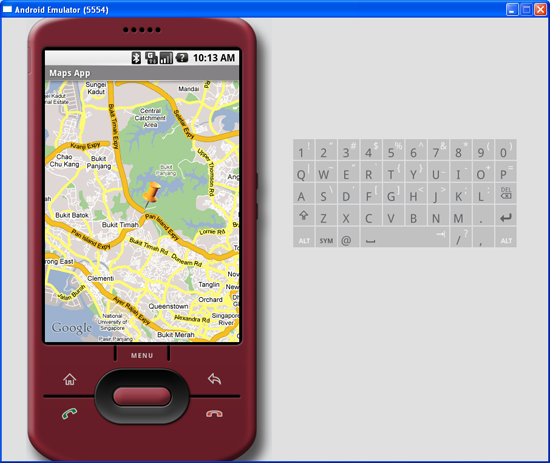
Figure 9 Adding a marker to the map
Getting the Location that was touched
After using Google Maps for a while, you may wish to know the latitude and longitude of a location corresponding to the position on the screen that you have just touched. Knowing this information is very useful as you can find out the address of a location, a process known as Geocoding (you will see how this is done in the next section).
If you have added an overlay to the map, you can override the onTouchEvent() method within the Overlay class. This method is fired every time the user touches the map. This method has two parameters - MotionEvent and MapView. Using the MotionEvent parameter, you can know if the user has lifted his finger from the screen using the getAction() method. In the following code, if the user has touched and then lifted his finger, you will display the latitude and longitude of the location touched:
class MapOverlay extends com.google.android.maps.Overlay { @Override public boolean draw(Canvas canvas, MapView mapView, boolean shadow, long when) { //... } @Override public boolean onTouchEvent(MotionEvent event, MapView mapView) { //---when user lifts his finger--- if (event.getAction() == 1) { GeoPoint p = mapView.getProjection().fromPixels( (int) event.getX(), (int) event.getY()); Toast.makeText(getBaseContext(), p.getLatitudeE6() / 1E6 + "," + p.getLongitudeE6() /1E6 , Toast.LENGTH_SHORT).show(); } return false; } }
Figure 10 shows this in action.
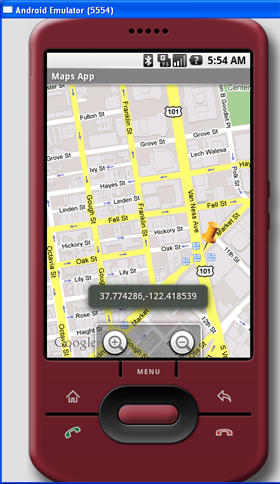
Figure 10 Displaying the latitude and longitude of a point touched on the map
Geocoding and Reverse Geocoding
If you know the latitude and longitude of a location, you can find out its address using a process known as Geocoding. Google Maps in Android supports this via the Geocoder class. The following code shows how you can find out the address of a location you have just touched using the getFromLocation() method:
class MapOverlay extends com.google.android.maps.Overlay { @Override public boolean draw(Canvas canvas, MapView mapView, boolean shadow, long when) { //... } @Override public boolean onTouchEvent(MotionEvent event, MapView mapView) { //---when user lifts his finger--- if (event.getAction() == 1) { GeoPoint p = mapView.getProjection().fromPixels( (int) event.getX(), (int) event.getY()); Geocoder geoCoder = new Geocoder( getBaseContext(), Locale.getDefault()); try { List<Address> addresses = geoCoder.getFromLocation( p.getLatitudeE6() / 1E6, p.getLongitudeE6() / 1E6, 1); String add = ""; if (addresses.size() > 0) { for (int i=0; i<addresses.get(0).getMaxAddressLineIndex(); i++) add += addresses.get(0).getAddressLine(i) + "\n"; } Toast.makeText(getBaseContext(), add, Toast.LENGTH_SHORT).show(); } catch (IOException e) { e.printStackTrace(); } return true; } else return false; } }
Figure 11 shows the above code in action.
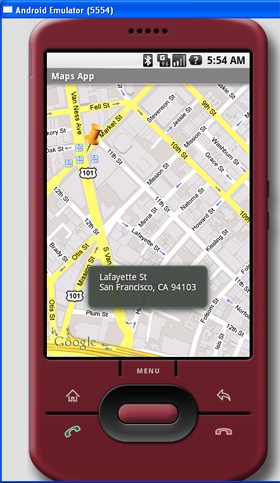
Figure 11 Performing Geocoding in Google Maps
If you know the address of a location but want to know its latitude and longitude, you can do so via reverse-Geocoding. Again, you can use the Geocoder class for this purpose. The following code shows how you can find the exact location of the Empire State Building by using the getFromLocationName() method:
Geocoder geoCoder = new Geocoder(this, Locale.getDefault()); try { List<Address> addresses = geoCoder.getFromLocationName( "empire state building", 5); String add = ""; if (addresses.size() > 0) { p = new GeoPoint( (int) (addresses.get(0).getLatitude() * 1E6), (int) (addresses.get(0).getLongitude() * 1E6)); mc.animateTo(p); mapView.invalidate(); } } catch (IOException e) { e.printStackTrace(); }
Once the location is found, the above code navigates the map to the location. Figure 12 shows the code in action.
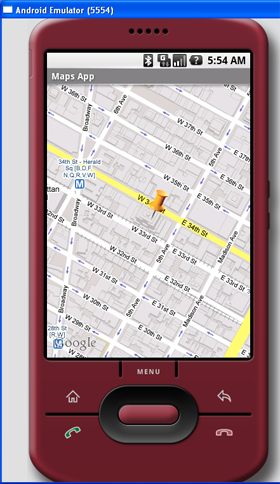
Figure 12 Navigating to the Empire State Building
Summary
In this article, you have learnt a few tricks for the Google Maps in Android. Using Google Maps, there are many interesting projects you can work on, such as geo-tagging, geo-tracking, etc. If you have cool ideas on building cool location-based services, share with us in the comments box below. Have fun!
A Visual Guide to Android GUI Widgets

For rapid development of your user interfaces try DroidDraw
| ||||||||||||||||||||||||||||||||||||||||||||||||||||||||
|
package com.sh; import android.app.Activity; import java.util.Currency; import android.app.ListActivity; public class SelectCurrency extends ListActivity { String[] countries ={"aaa","bbb","ccc","ddd","eee","fff"}; @Override ll = Locale.getAvailableLocales(); setListAdapter(new ArrayAdapter<String>(this, @Override }
|
|
package com.sh; import android.app.Activity; public class PokerWinnings extends Activity { |
| <?xml version="1.0" encoding="utf-8"?> <LinearLayout xmlns:android="http://schemas.android.com/apk/res/android" android:orientation="vertical" android:layout_width="fill_parent" android:layout_height="fill_parent" > <TextView android:layout_width="fill_parent" android:layout_height="wrap_content" android:text="@string/hello" /> </LinearLayout> |
| <?xml version="1.0" encoding="utf-8"?> <LinearLayout xmlns:android="http://schemas.android.com/apk/res/android" android:orientation="vertical" android:layout_width="fill_parent" android:layout_height="fill_parent" > <TextView android:layout_width="fill_parent" android:layout_height="wrap_content" android:text="@string/hello" /> </LinearLayout> |
AndroidManifest.xml
|
<?xml version="1.0" encoding="utf-8"?> </manifest> |
strings.xml
| <?xml version="1.0" encoding="utf-8"?> <resources> <string name="hello">Hello World, SelectCurrency!</string> <string name="app_name">리스트클릭테스트</string> </resources> |
화면


 watchwidget.zip
watchwidget.zip
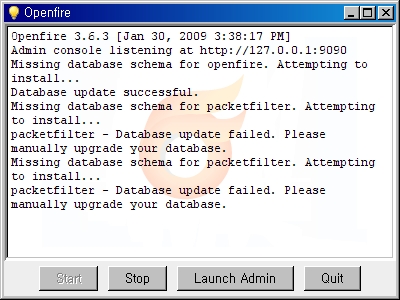
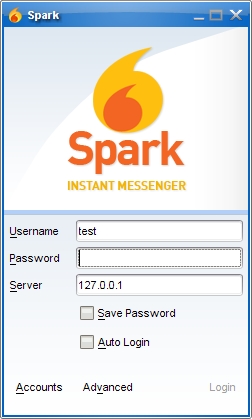





















 WebViewingApp.zip
WebViewingApp.zip Prev
Prev
